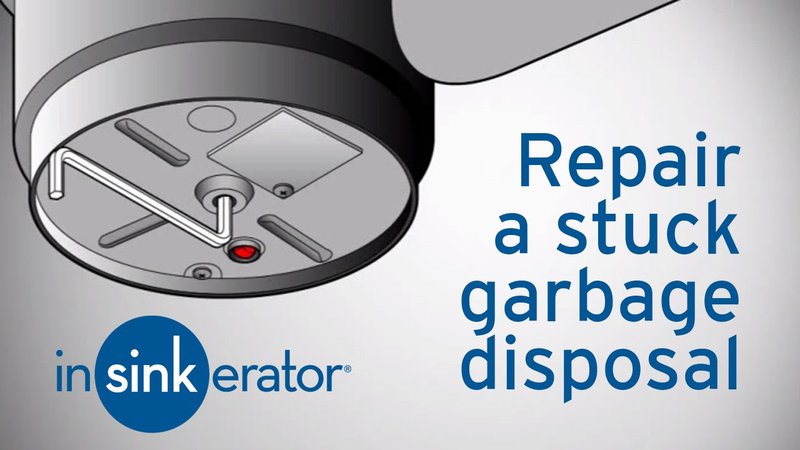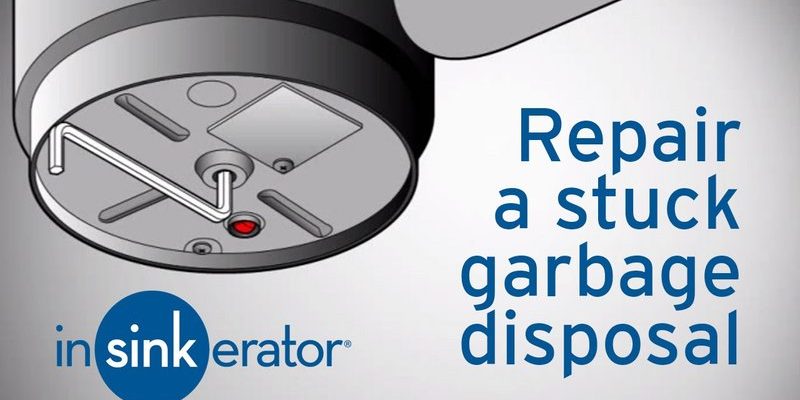
Imagine your garbage disposal is like a car engine. It usually purrs along quite nicely, handling whatever you toss its way. However, if something goes wrong, like a check engine light for cars, the disposal signals with an error code. The E1 error is essentially a call for help, indicating that something isn’t quite right. It’s the unit’s way of saying, “Hey, there’s an issue here, and I need some attention!”
Understanding these codes can save you time, money, and a few headaches. Instead of panicking or calling a plumber at the first sign of trouble, you can learn to troubleshoot and potentially fix the problem yourself. Let’s dig deeper into what E1 means and how you can respond effectively.
What Causes the E1 Error Code?
The E1 error code on an InSinkErator garbage disposal generally indicates an issue with the jam sensor. Think of this sensor as a little traffic cop inside your disposal. Its job is to monitor the rotor’s movement — those spinning blades that munch up your food waste. If it detects a jam, which means the blades aren’t turning as they should, the sensor triggers the E1 code.
Sometimes, it’s as simple as a foreign object stuck in the disposal. Imagine a tiny piece of bone or a spoon wedged in the blades like a wrench thrown into the gears. That can stop everything in its tracks. At other times, the issue might be due to an overload from putting too much food waste in at once.
Occasionally, this error can appear even if there’s no physical blockage. It might be a sign of an electrical hiccup in the system. Like when you’re watching your favorite show and the TV suddenly goes blank; sometimes, all it needs is a simple reset. Each scenario involves slightly different steps, but none are too daunting for a beginner to tackle.
Steps to Resolve an E1 Error Code
First things first, always ensure your safety. Before you start fiddling with the disposal, make sure the power is turned off. The last thing you want is a surprise spin from those sharp blades — ouch! To cut power, either unplug the unit or switch off the circuit breaker.
Once you’ve ensured safety, it’s time to investigate. If you suspect a jam, you’ll need to clear it out. Use a flashlight to peer into the disposal and see if you can spot anything unusual. If there’s something stuck, like a bottle cap or a piece of bone, use tongs or pliers to gently remove it. Whatever you do, don’t use your fingers!
If you can’t find anything and the code persists, you might simply need to reset the appliance. Many times, it’s like rebooting a computer — turning it off and on can work wonders. Find the red reset button located at the bottom of your unit. Press it, and then power the disposal back on. With any luck, the E1 code will be a thing of the past!
Preventing Future E1 Error Codes
Now that you’ve tackled the problem, how do you prevent it from happening again? It’s all about being mindful of what goes down the disposal. Remember, not everything belongs in there. Avoid fibrous foods like celery, eggshells, or coffee grounds — they can twist and tangle like a bad haircut. Instead, toss these items in your compost or trash.
Regular maintenance can also go a long way towards prevention. Run cold water while the disposal is in use to help flush everything through. Consider grinding small ice cubes occasionally, as they can help clean the blades and remove any greasy build-up.
Lastly, listen to your disposal. If it sounds strained or struggles to process your scraps, it might be a sign to ease up. Don’t overload it. Treat it with care, much like you would any other appliance in your kitchen. By doing so, you can minimize the chances of seeing that pesky E1 error code ever again.
In conclusion, while the E1 error code can seem like a major hassle, armed with the right information, it’s entirely manageable. Following these steps can ensure your InSinkErator remains a helpful, worry-free assistant in your kitchen for years to come.
